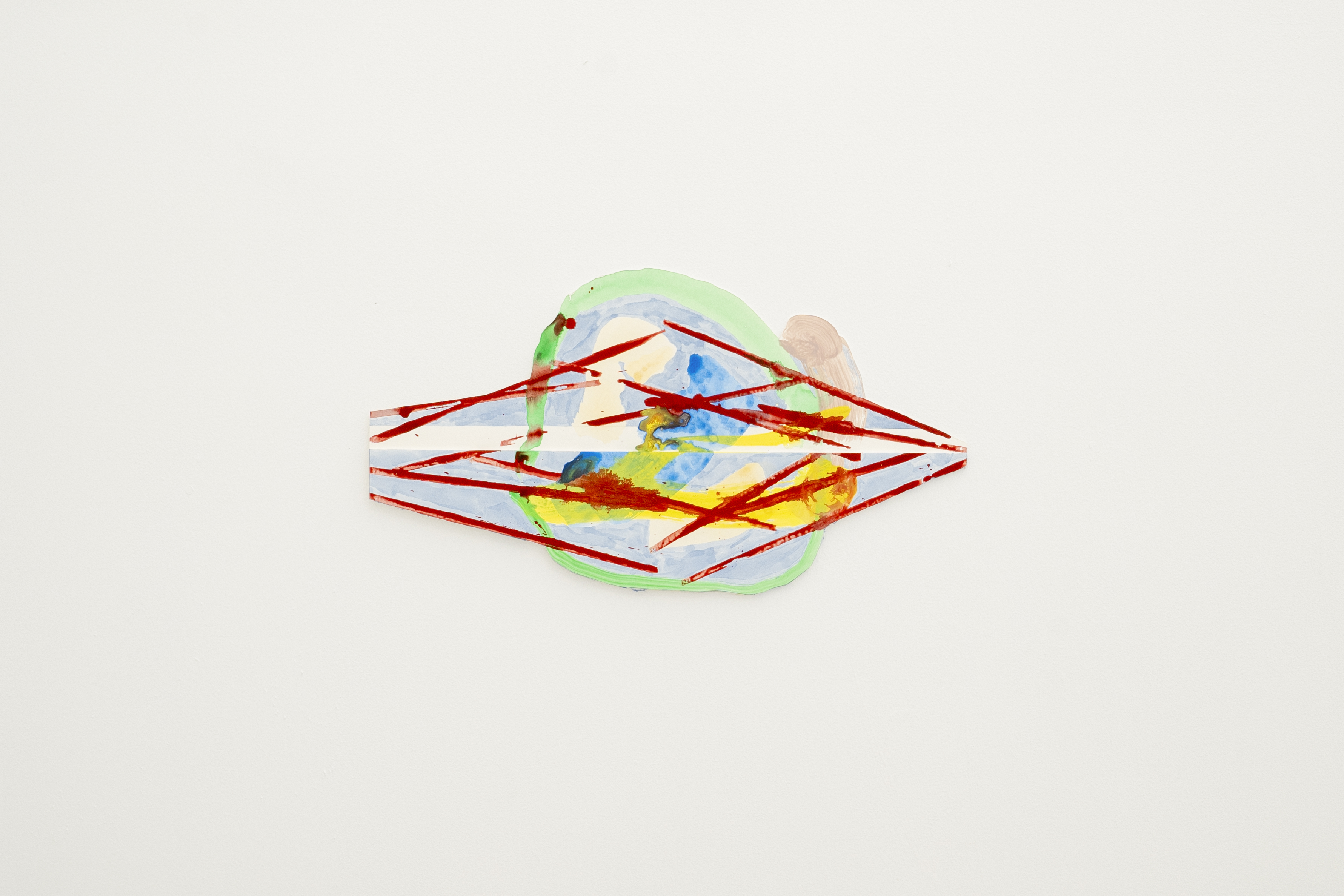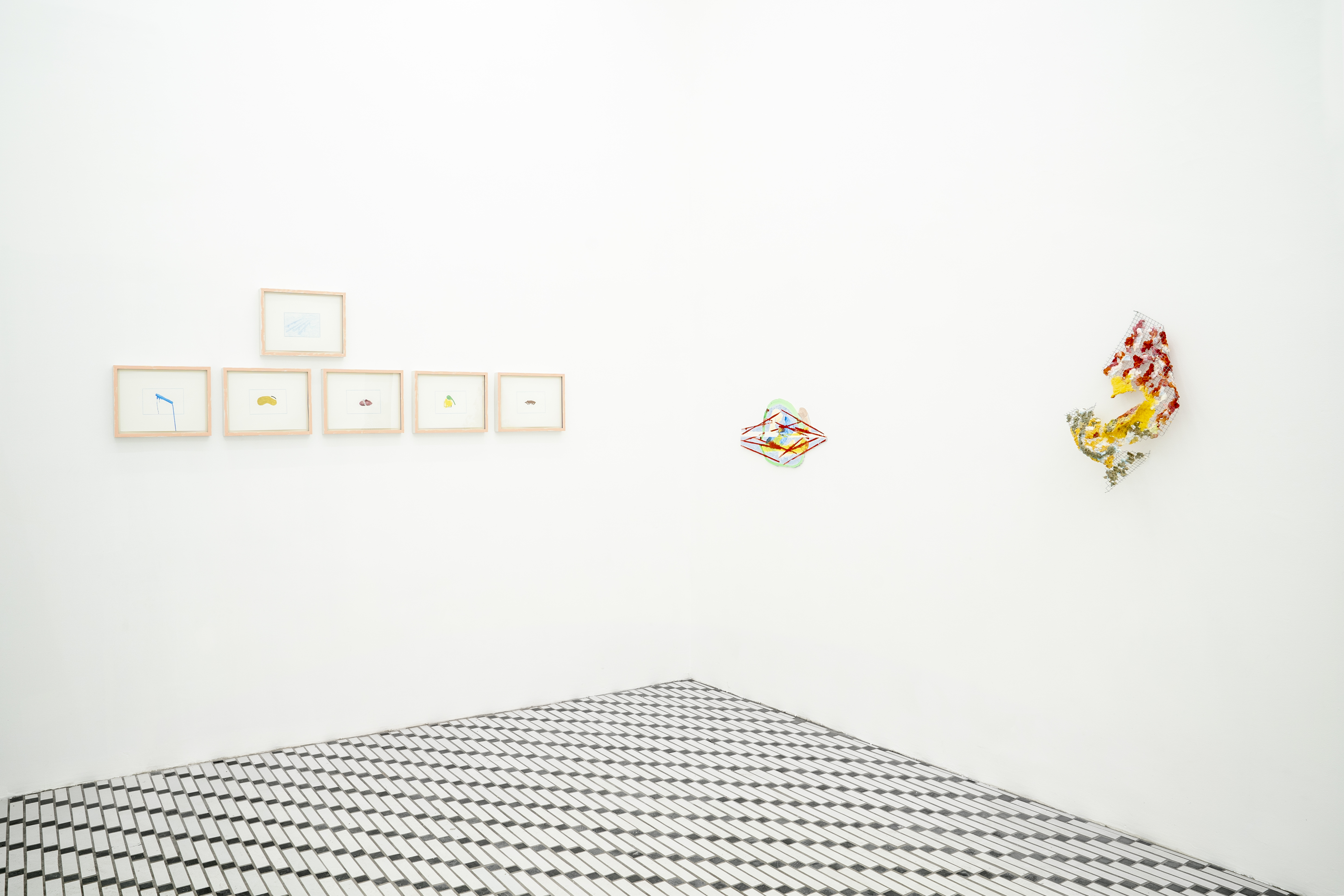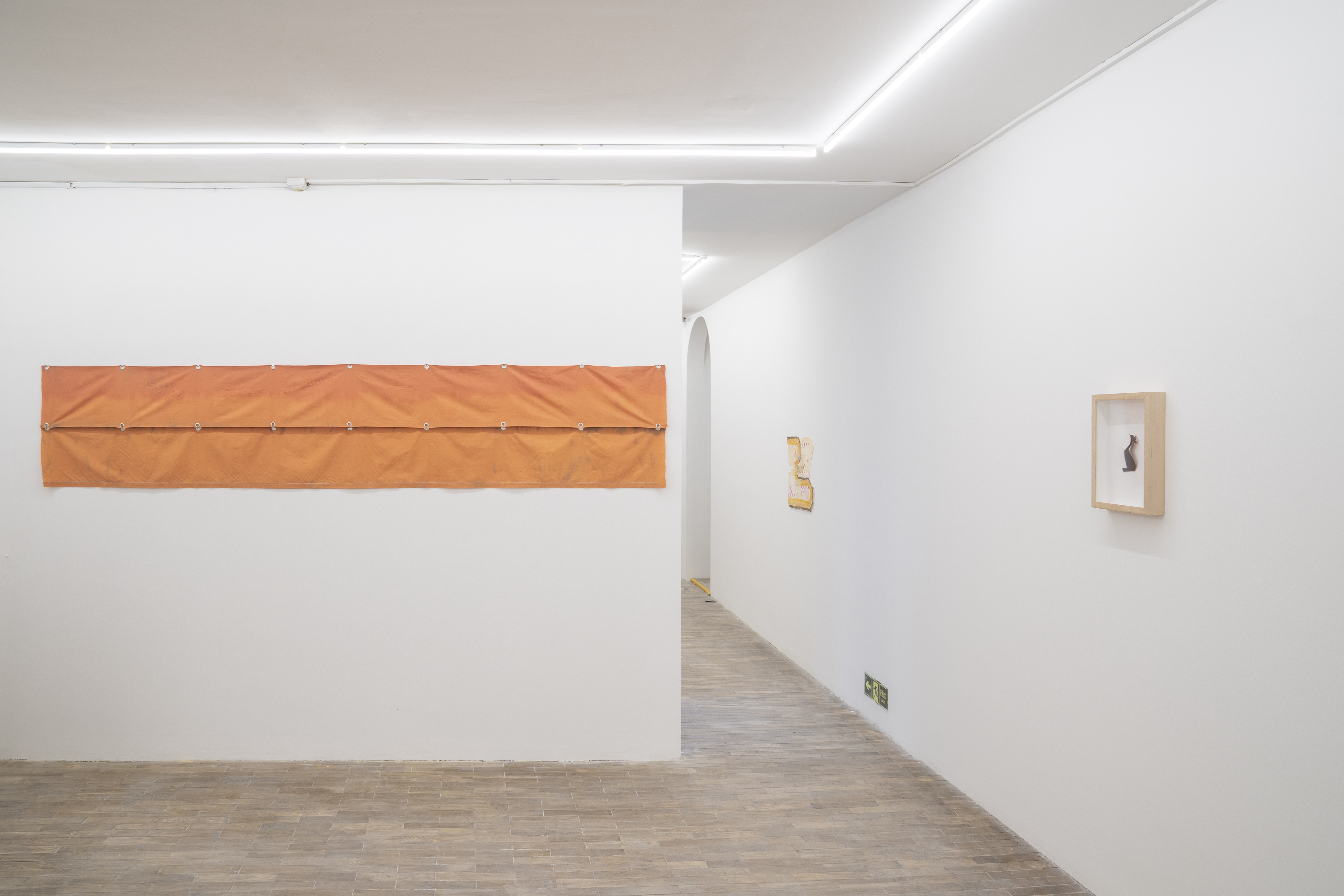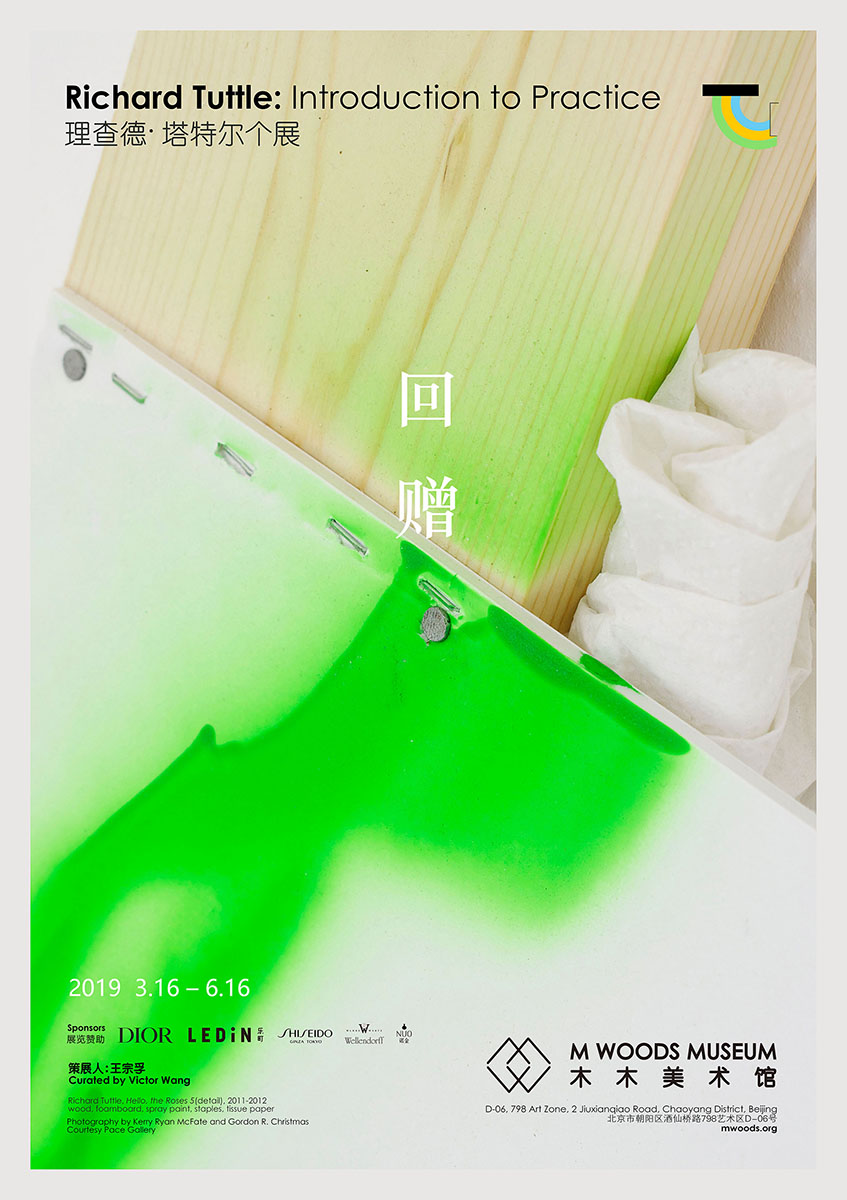
Richard Tuttle: Introduction to Practice
Richard Tuttle: Introduction to Practice
Curated by Victor Wang
16 March – 16 June 2019
Everything is Below Silence
“Richard Tuttle: Introduction To Practice” is the first museum survey in China of the work of renowned artist and poet Richard Tuttle, taking place in Beijing in March 2019 and curated by Victor Wang.
The importance of Beijing to the artist is summed up by the poem he wrote during his stay there: “Still the capital allows for hiding in plain sight.”
The exhibition was developed as a path, a specific journey into the visual and ‘un-visual’ language that constitutes Tuttle’s practice. This five-decade survey of one hundred works, organised in close collaboration with the artist, focuses on his pursuit of art for life, and an art that serves society ; a language and practice of making that is about reality and concerned with strengthening the spirit.
A system developed by the artist and curator, called ‘clusters’, in which a single cluster includes three works representative of a group, allows artworks from different periods to be arranged together into new harmonies and outside a chronological reading. In total the exhibition includes thirty-three clusters including drawings, works on paper, collages, sculptures, textiles, prints, an artist’s book, a major site-specific work entitled A Treatise on Stars (2019), and a new series of tile ground-works which the viewer is invited to stand on, Further, angled walls designed as ‘exhibition furniture’ provide continuity throughout the show, and a deployment system for the artworks, further integrating the experience of the exhibition with the viewer’s, allowing the show itself to be viewed as a work of art.
Since the mid-1960s, Richard Tuttle’s work has transcended the defined artistic categories of sculpture, painting, drawing and poetry, whilst resisting art-historical categories such as minimalism or abstraction. With open-mindedness, Tuttle moves beyond the aesthetic conditions of low or high material in art, finding strength in fragility and in the shifting connections between scale and environment. From early in his career Tuttle has created work that is continuously contemporary whilst comparatively pushing his practice beyond previous iterations. In his 1972 exhibition that featured his Wire Pieces, a visitor to Betty Parsons Gallery in New York approached the dealer and asked whether the artist’s work could be described as ‘minimalist’. Parsons curtly replied: “to hell with -isms, Richard Tuttle is a great artist. He’s in love with the new.” In his first major survey, held in 1975 at the Whitney Museum in New York, Tuttle again pushed the definition of art through scale, method and material, furthering his investigation into the visible and the invisible world and mounting one of the Whitney's most provocative and controversial shows, which has acquired somewhat legendary status.
![]()
From his Third Rope Piece (1974), a (1/2 x 3 x 3/8 in) length of cotton washing-line attached to the wall by three nails, which when first displayed in the 1970s, created shock and intense interest by critiques and art audiences for its boldness and resolution as an artwork, to his 2014 commission for the Turbine Hall at Tate Modern entitled I Don’t Know: the Weave of Textile Language, which measures 24 metres long and 12 metres high, Tuttle weaves scale and environment together to highlight the powerful interrelationship between art as ‘place’ and as context.
![]()
Included in the MWOODS exhibition is Tuttle’s pivotal work Letters (The Twenty-Six Series), 1967, which was also included in the 1975 Whitney Museum survey: the presentation of this work was rearranged throughout the duration of the exhibition and represents an important shift in both Tuttle’s practice as an artist, and for American conceptualism. The artist instructed that the work be installed in any way the gallery staff wished, thus allowing the work to evolve continuously through installation changes, offering both the institution and the audience an involvement in the production and reception of the work.
Also included are his Paper Octagonals, which when first exhibited in the 1970s, pushed the boundaries of minimalism and site-specific art. First made in cloth, then in paper, and finally in wire, this reduction of object quality to geometric form developed over a five-year period shows Tuttle’s continued interest to break from the rectangular field of art and the environment in which it is shown. The shape of the works is based on a square set on its side and cut off at its corners. Each paper octagonal is further embedded into a space when pasted directly onto the wall, allowing the architecture and work to be bound together, as the wall’s surface shows through the thin, almost translucent, paper works. Becoming an early example of the intersections of art and architecture.
Richard Tuttle: Introduction to Practice
Curated by Victor Wang
16 March – 16 June 2019
Everything is Below Silence
“Richard Tuttle: Introduction To Practice” is the first museum survey in China of the work of renowned artist and poet Richard Tuttle, taking place in Beijing in March 2019 and curated by Victor Wang.
The importance of Beijing to the artist is summed up by the poem he wrote during his stay there: “Still the capital allows for hiding in plain sight.”
The exhibition was developed as a path, a specific journey into the visual and ‘un-visual’ language that constitutes Tuttle’s practice. This five-decade survey of one hundred works, organised in close collaboration with the artist, focuses on his pursuit of art for life, and an art that serves society ; a language and practice of making that is about reality and concerned with strengthening the spirit.
A system developed by the artist and curator, called ‘clusters’, in which a single cluster includes three works representative of a group, allows artworks from different periods to be arranged together into new harmonies and outside a chronological reading. In total the exhibition includes thirty-three clusters including drawings, works on paper, collages, sculptures, textiles, prints, an artist’s book, a major site-specific work entitled A Treatise on Stars (2019), and a new series of tile ground-works which the viewer is invited to stand on, Further, angled walls designed as ‘exhibition furniture’ provide continuity throughout the show, and a deployment system for the artworks, further integrating the experience of the exhibition with the viewer’s, allowing the show itself to be viewed as a work of art.
Since the mid-1960s, Richard Tuttle’s work has transcended the defined artistic categories of sculpture, painting, drawing and poetry, whilst resisting art-historical categories such as minimalism or abstraction. With open-mindedness, Tuttle moves beyond the aesthetic conditions of low or high material in art, finding strength in fragility and in the shifting connections between scale and environment. From early in his career Tuttle has created work that is continuously contemporary whilst comparatively pushing his practice beyond previous iterations. In his 1972 exhibition that featured his Wire Pieces, a visitor to Betty Parsons Gallery in New York approached the dealer and asked whether the artist’s work could be described as ‘minimalist’. Parsons curtly replied: “to hell with -isms, Richard Tuttle is a great artist. He’s in love with the new.” In his first major survey, held in 1975 at the Whitney Museum in New York, Tuttle again pushed the definition of art through scale, method and material, furthering his investigation into the visible and the invisible world and mounting one of the Whitney's most provocative and controversial shows, which has acquired somewhat legendary status.
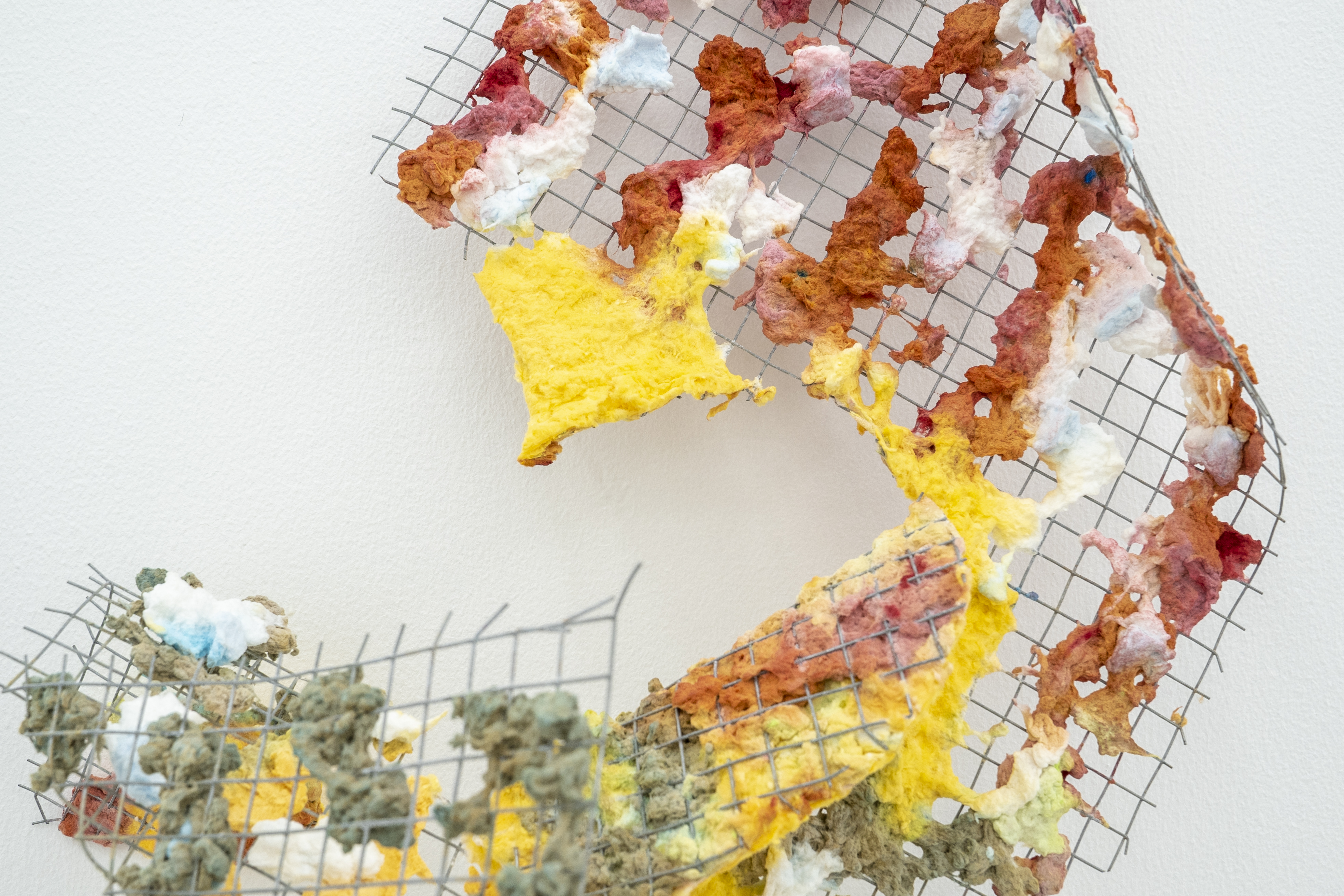
From his Third Rope Piece (1974), a (1/2 x 3 x 3/8 in) length of cotton washing-line attached to the wall by three nails, which when first displayed in the 1970s, created shock and intense interest by critiques and art audiences for its boldness and resolution as an artwork, to his 2014 commission for the Turbine Hall at Tate Modern entitled I Don’t Know: the Weave of Textile Language, which measures 24 metres long and 12 metres high, Tuttle weaves scale and environment together to highlight the powerful interrelationship between art as ‘place’ and as context.
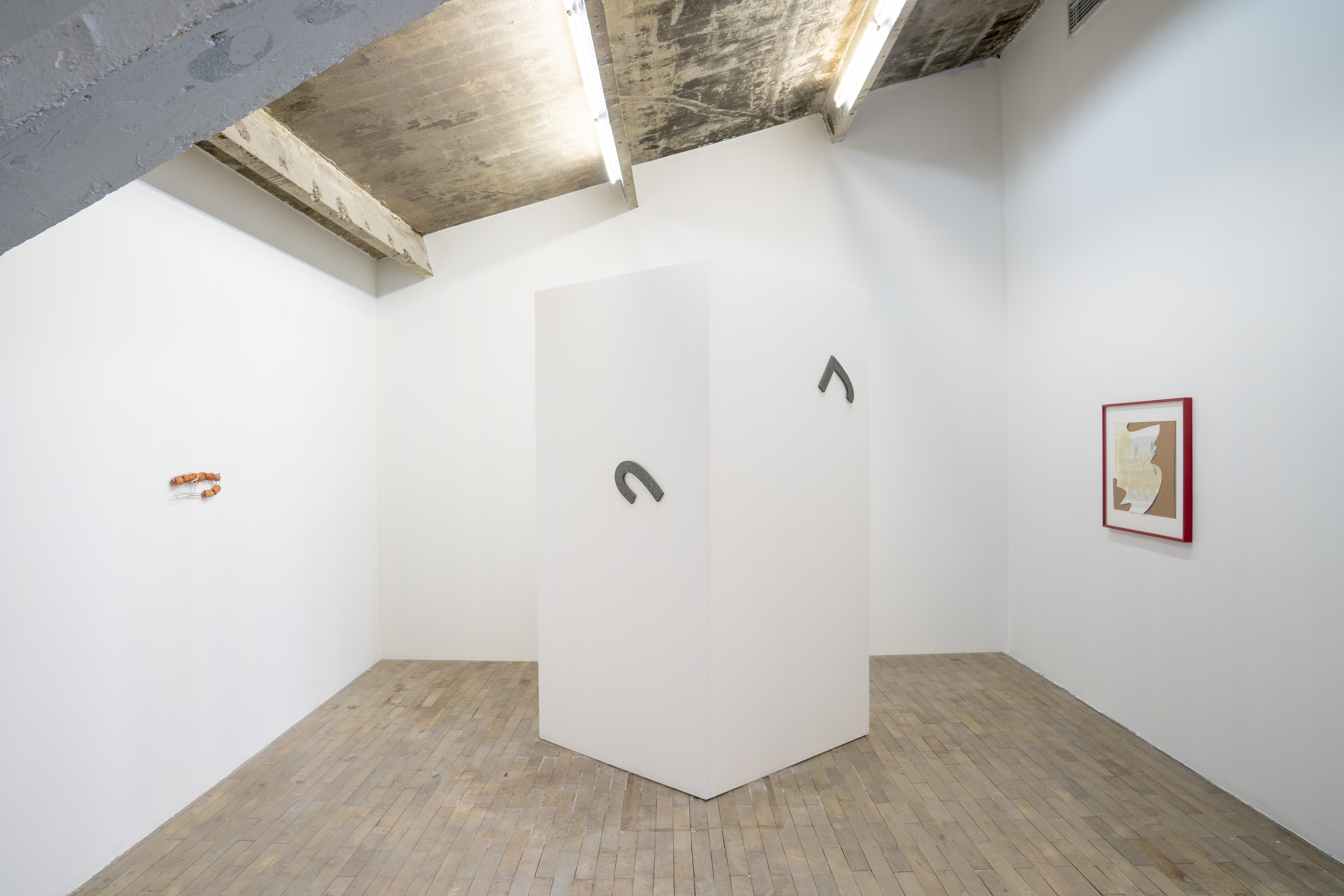
Included in the MWOODS exhibition is Tuttle’s pivotal work Letters (The Twenty-Six Series), 1967, which was also included in the 1975 Whitney Museum survey: the presentation of this work was rearranged throughout the duration of the exhibition and represents an important shift in both Tuttle’s practice as an artist, and for American conceptualism. The artist instructed that the work be installed in any way the gallery staff wished, thus allowing the work to evolve continuously through installation changes, offering both the institution and the audience an involvement in the production and reception of the work.
Also included are his Paper Octagonals, which when first exhibited in the 1970s, pushed the boundaries of minimalism and site-specific art. First made in cloth, then in paper, and finally in wire, this reduction of object quality to geometric form developed over a five-year period shows Tuttle’s continued interest to break from the rectangular field of art and the environment in which it is shown. The shape of the works is based on a square set on its side and cut off at its corners. Each paper octagonal is further embedded into a space when pasted directly onto the wall, allowing the architecture and work to be bound together, as the wall’s surface shows through the thin, almost translucent, paper works. Becoming an early example of the intersections of art and architecture.
Another important early series, Wire Pieces, was made in situ in the museum, and this is unique with every installation. Tuttle describes the works as ‘capturing the types of experience that cannot be repeated’. Likewise, no wire piece in the series is the same. Keeping within the artist’s scale, and informed by his hand, Tuttle unspools a long filament of metal wire, nailing one end to the wall and then methodically following the wire’s contours with a pencilled line on the wall, creating an almost illusionary depth and connection between both lines. Likewise, in his Line Pieces (1990) the pre-existing artwork is accompanied by a site-specific pencilled line drawn on the wall by the artist, further integrating the artwork into the environment and the place.
![]()
The museum’s central hall will feature a new major site-specific artwork that consists of a five-meter high aluminium mesh ceiling and an eight-layered fabric and PVC pipe wall sculpture entitled A Treatise on Stars (2019), that confronts the viewer with the urgency of opaqueness and transparency. A series of new hand-painted floor tiles entitled Ground Works (2019), made following Hispanic traditions, then translated into local idioms, both modern and ancient, produce an art experience for the viewer that starts from the ground.
![]()
Accompanying the exhibition will be a unique book designed by the artist. This distinctive self-contained publication is composed of ten smaller printed books enclosed within one larger book. Like previous publications by the artist, it moves between artwork and printed matter. Over the course of his career, Tuttle’s commitment to creating powerful artworks for life is reflected in the direction of the exhibition. By mounting a survey using the non-chronological cluster system, we get a better understanding of Tuttle’s language and what Tuttle himself describes as, “a way to bring us closer to understanding what art is.”
![]()
About the Artist
Richard Tuttle (b. 1941, New Jersey) lives and works between Maine, New Mexico and New York. His works are in major private and public collections around the world, and his recent retrospectives have been held at the San Francisco Museum of Modern Art; the Whitney Museum of American Art, New York; the Museum of Contemporary Art, Chicago; Los Angeles Museum of Contemporary Art; and Whitechapel Gallery, London. His other achievements include a major commission at Tate Modern’s Turbine Hall, invitations to the Venice Biennale (1976, 1997, 2001), Documenta (1972, 1977 and 1987) and the Whitney Biennial (1977, 1987, 2000).
Engaged with sculpture, painting, drawing and poetry, Tuttle resists art historical classifications, such as Minimalism or Abstraction. His aesthetic forms carry a remarkable sensitivity towards everyday materials, sparking much critical debate since the 1960s. Ephemeral yet timeless, their attention to scale and environment continue to inspire to this day. Unfolding across the entirety of the museum, Introduction of Practice offers Chinese audiences a rare opportunity to engage directly with Tuttle’s diverse oeuvre.
About the Curator
Victor Wang is an independent curator and exhibition-maker based in Shanghai and London. He is an Associate Curator of Performa, New York, and editor of the recent publication ‘Performance Histories from East Asia 1960s–90s‘ (DRAF 2018).
Recently Wang has curated museum and gallery exhibitions at National Gallery in Berlin (forthcoming 2019); ShanghART Gallery, Shanghai (2018); Whitechapel Gallery, London (2018); Sadie Coles HQ, London (2017); Cc Foundation & Art Centre, Shanghai (2017); the Museum of Contemporary Art, Pavilion, Shanghai (2016) the chi K11 art museum, Shanghai (2016); and the Institute of Contemporary Arts, London (2014). Wang was part of the curatorial team of the Twelfth Havana Biennial (2015); and the Vancouver Pavilion at the 9th Shanghai Biennale (2012).
Wang has lectured on contemporary Chinese art at universities such as Tokyo University of the Arts, Tokyo, The Courtauld Institute of Art, London, Central Saint Martins, London, and was a Visiting Lecturer at the Royal College of Art, London.
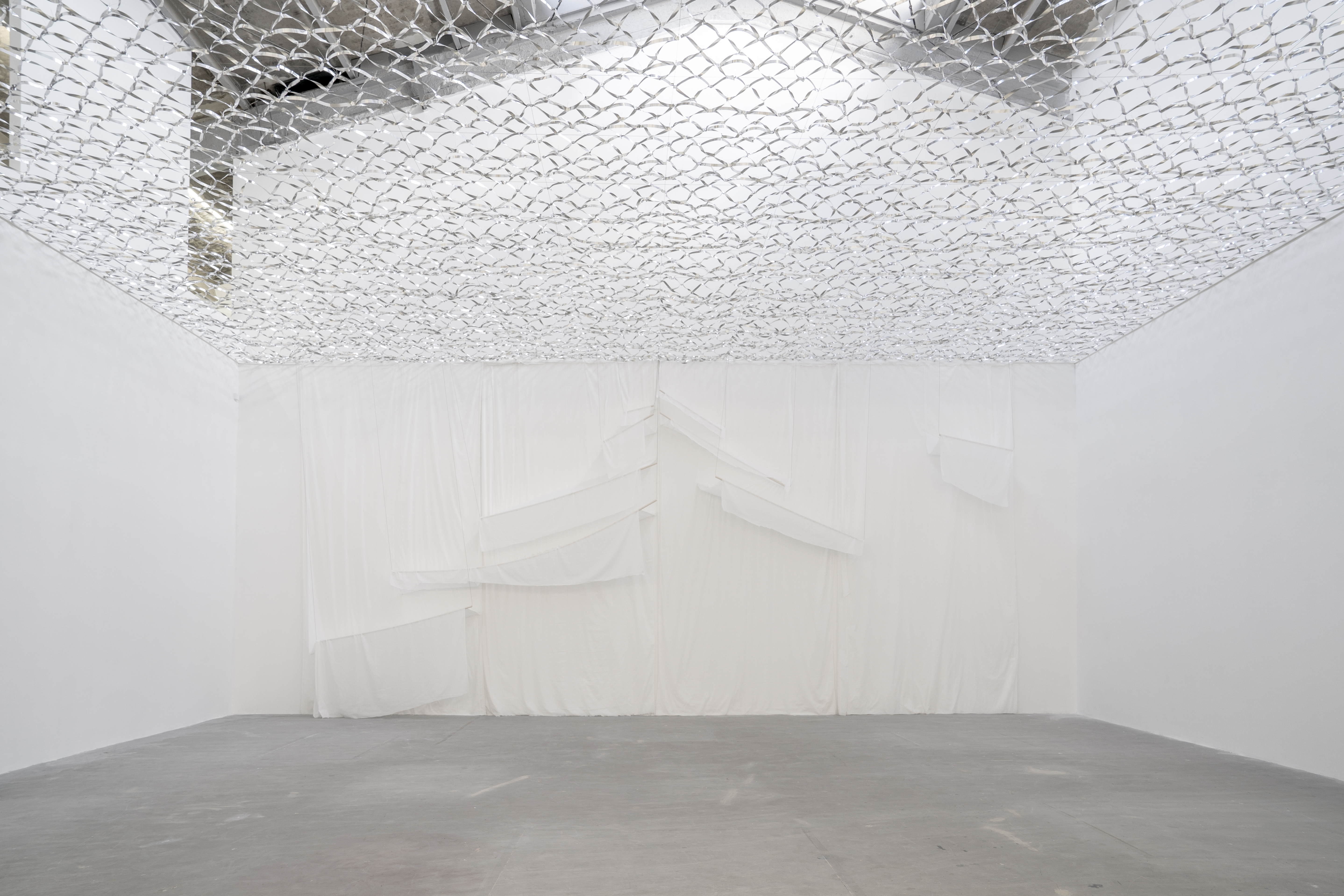
The museum’s central hall will feature a new major site-specific artwork that consists of a five-meter high aluminium mesh ceiling and an eight-layered fabric and PVC pipe wall sculpture entitled A Treatise on Stars (2019), that confronts the viewer with the urgency of opaqueness and transparency. A series of new hand-painted floor tiles entitled Ground Works (2019), made following Hispanic traditions, then translated into local idioms, both modern and ancient, produce an art experience for the viewer that starts from the ground.

Accompanying the exhibition will be a unique book designed by the artist. This distinctive self-contained publication is composed of ten smaller printed books enclosed within one larger book. Like previous publications by the artist, it moves between artwork and printed matter. Over the course of his career, Tuttle’s commitment to creating powerful artworks for life is reflected in the direction of the exhibition. By mounting a survey using the non-chronological cluster system, we get a better understanding of Tuttle’s language and what Tuttle himself describes as, “a way to bring us closer to understanding what art is.”
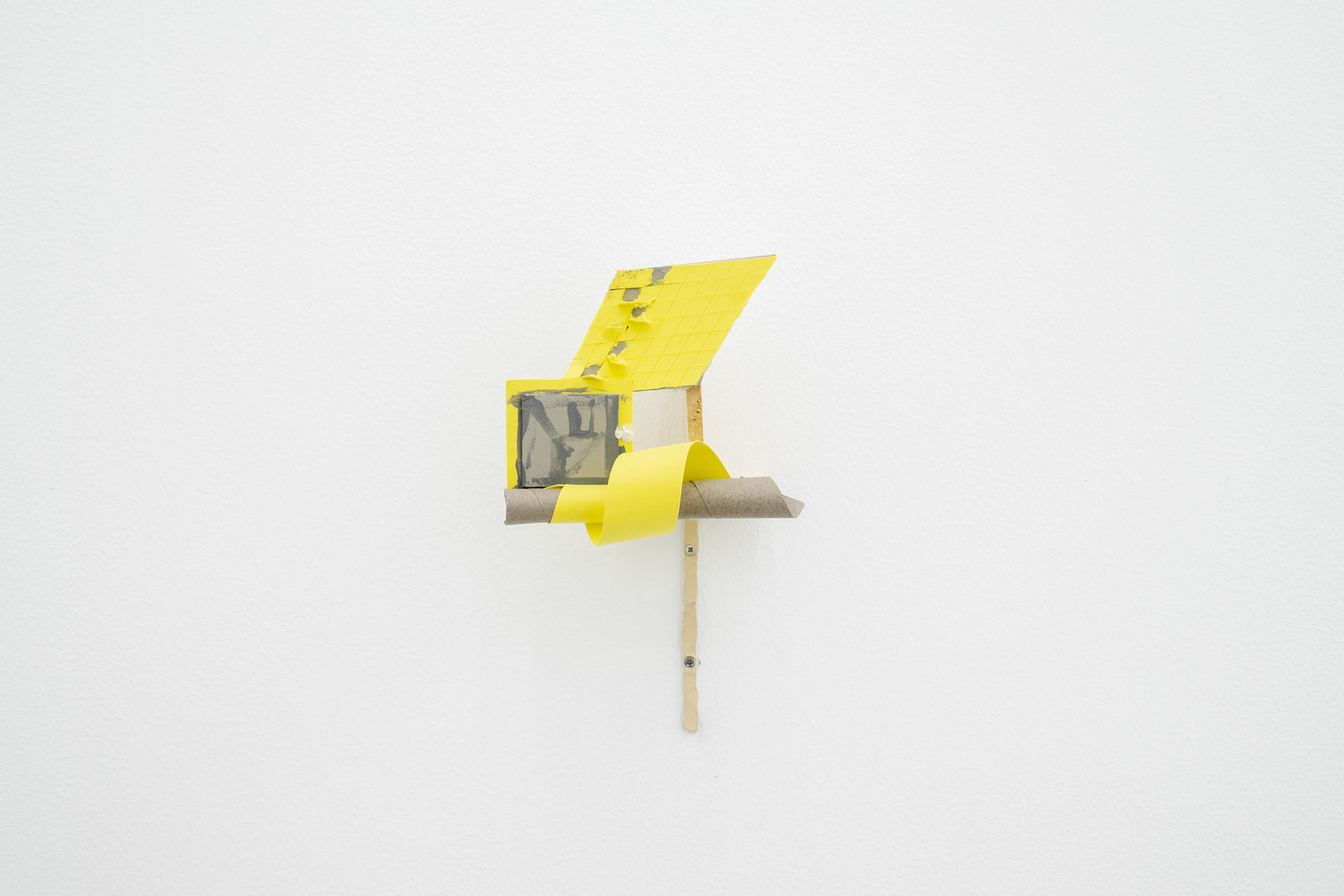
About the Artist
Richard Tuttle (b. 1941, New Jersey) lives and works between Maine, New Mexico and New York. His works are in major private and public collections around the world, and his recent retrospectives have been held at the San Francisco Museum of Modern Art; the Whitney Museum of American Art, New York; the Museum of Contemporary Art, Chicago; Los Angeles Museum of Contemporary Art; and Whitechapel Gallery, London. His other achievements include a major commission at Tate Modern’s Turbine Hall, invitations to the Venice Biennale (1976, 1997, 2001), Documenta (1972, 1977 and 1987) and the Whitney Biennial (1977, 1987, 2000).
Engaged with sculpture, painting, drawing and poetry, Tuttle resists art historical classifications, such as Minimalism or Abstraction. His aesthetic forms carry a remarkable sensitivity towards everyday materials, sparking much critical debate since the 1960s. Ephemeral yet timeless, their attention to scale and environment continue to inspire to this day. Unfolding across the entirety of the museum, Introduction of Practice offers Chinese audiences a rare opportunity to engage directly with Tuttle’s diverse oeuvre.
About the Curator
Victor Wang is an independent curator and exhibition-maker based in Shanghai and London. He is an Associate Curator of Performa, New York, and editor of the recent publication ‘Performance Histories from East Asia 1960s–90s‘ (DRAF 2018).
Recently Wang has curated museum and gallery exhibitions at National Gallery in Berlin (forthcoming 2019); ShanghART Gallery, Shanghai (2018); Whitechapel Gallery, London (2018); Sadie Coles HQ, London (2017); Cc Foundation & Art Centre, Shanghai (2017); the Museum of Contemporary Art, Pavilion, Shanghai (2016) the chi K11 art museum, Shanghai (2016); and the Institute of Contemporary Arts, London (2014). Wang was part of the curatorial team of the Twelfth Havana Biennial (2015); and the Vancouver Pavilion at the 9th Shanghai Biennale (2012).
Wang has lectured on contemporary Chinese art at universities such as Tokyo University of the Arts, Tokyo, The Courtauld Institute of Art, London, Central Saint Martins, London, and was a Visiting Lecturer at the Royal College of Art, London.
